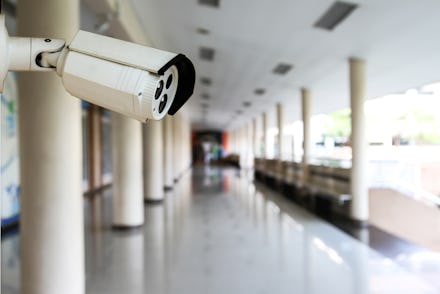A school district in New York wants to use facial recognition. Here's why that's a problem.

In a complete 180 from the decision to ban government agencies from using the technology in San Francisco, a Western New York school district wants to use facial recognition as part of a security system for its public schools. The Lockport City School District claims this system, called 'Aegis,' will provide early warning signs of any threats to the people in its schools. But as it set to go into testing next week, the system is now facing a challenge from the New York State Education department.
In an informative letter sent to parents, and obtained by BuzzFeed News, the school district outlined its goal to prevent the possibility of a school shooting or violence on its grounds. To that end, Aegis will monitor and identify suspicious individuals such as people with weapons, suspended students or staff, and sexual offenders. The system is also expected to identify specific types of guns and alert security to its presence. According to the letter, video footage taken by these cameras will remain in the system for only 60 days before it is deleted.
The decision to bring facial recognition into an area with children is controversial, to say the least. "It's a really foolish application of technology to a problem," said Jim Shultz to Forbes. As the head of the nonprofit Democracy Center, Shultz believes this is just an expensive waste of funds. Zak Doffman, a cybersecurity contributor for Forbes, seemed to agree, using the Parkland shooting suspect as an example to point out how many 'perfects' must line up to actually catch a potential shooter.
"They had 120 seconds from [the suspect] exiting the Uber to firing his first shot," Doffman wrote. Not only does the suspect need to have a file in the facial recognition system, his image would have to be high-quality, the operators must accept the alert as-is, no one must double-check the details to verify the alert, and the security guards must react without hesitation.
To make matters more complicated, facial recognition technology is still notoriously imperfect. Police forces in the United Kingdom have been testing it in public spaces, only to find that 92 percent of the matches were actually wrong, according to the BBC. A lawyer with the civil rights group, Liberty, also added that current studies show a weakness within facial recognition systems in identifying women and darker-skinned faces.
"If you are a woman or from an ethnic minority and you walk past the camera, you are more likely to be identified as someone on a watch list, even if you are not," said the lawyer, Megan Goulding, to the BBC. "That means you are more likely to be stopped and interrogated by the police."
According to 2017-2018 enrollment data for the Lockport City School District, most of its 4,470 students are white. This still leaves the female half of the entire student body and almost one-third of racial minority students at risk of being misidentified. This has not gone unnoticed by critics of the new security system.
"San Francisco banned this tech, and it’s this major city closest to all the people who understand this tech the best," said a counsel for the New York Civil Liberties Union (NYCLU). "Why in the world would we want this to come to New York, and in a place where there are children?"
So far, Aegis has cost the Lockport City School District $1.4 million to set up. The district will be allocating even more towards the system from a pool of $4.2 million in funding it received that was intended for educational technology to enhance student learning, such as laptops.
The NYCLU and a New York State Assembly Member have urged the halt of this system until further information is available. Their efforts have been successful so far — in a statement to the Lockport Union-Sun & Journal, the New York State Education Department has ordered the school district to cease its attempts until there are better regulations in place to ensure the security and privacy of the student data obtained by Aegis. For now, the students of the eight schools that make up the Lockport City School District will not have to deal with what was likely an imperfect facial recognition system.
Testing of the system was supposed to begin on June 3. Aegis was planned to be operational in all district schools by Sept. 1.